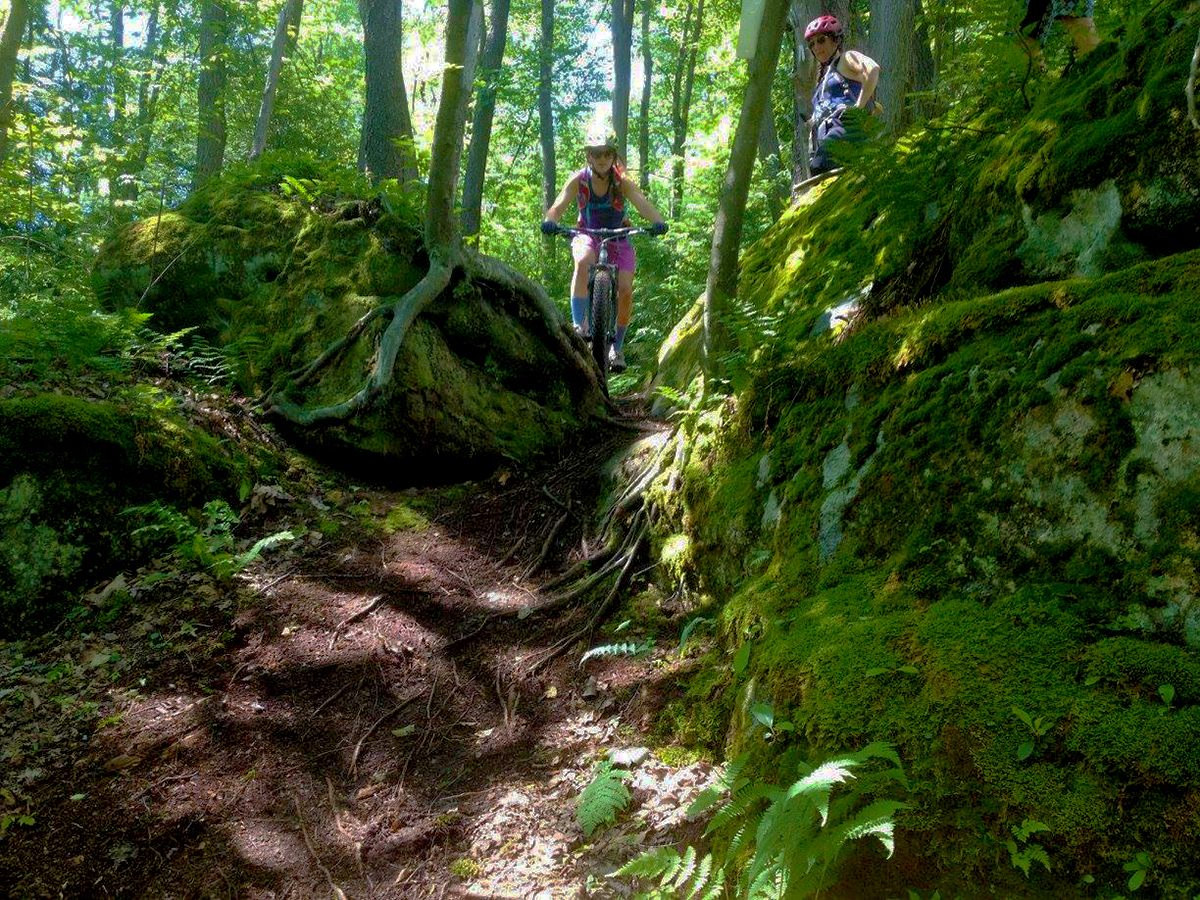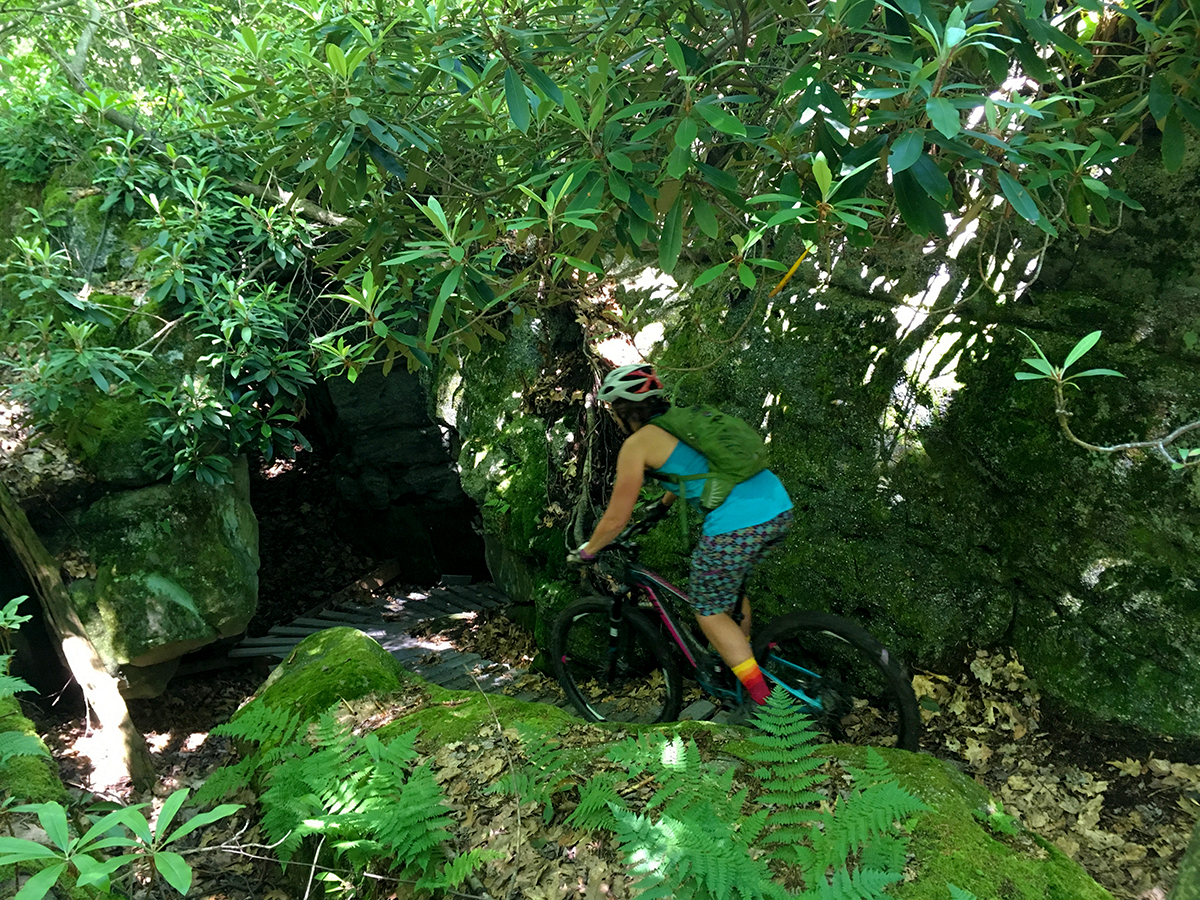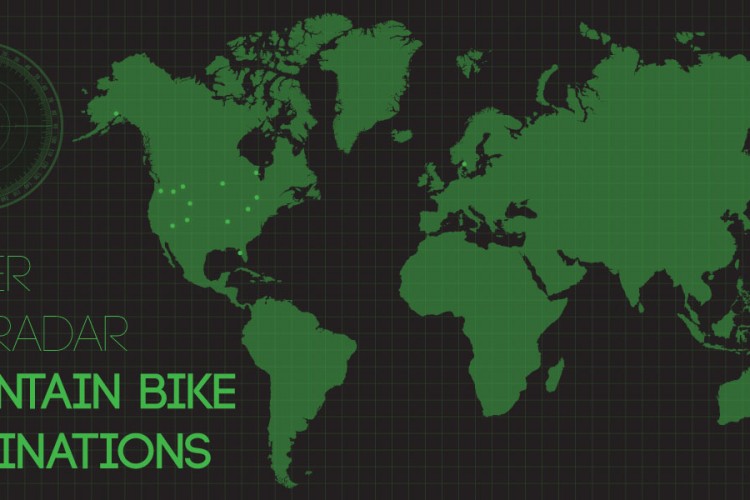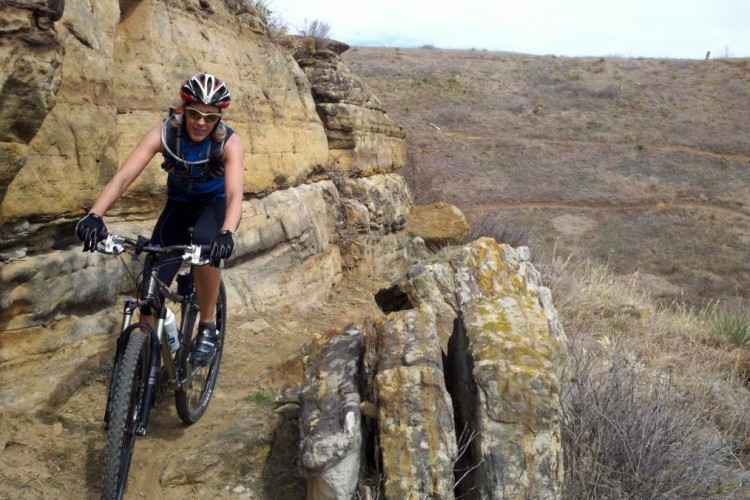
When you first arrive at Big Bear Lake, West Virginia, you may not necessarily be inclined to think that it’s a top-rated mountain bike destination. You might be greeted at the front guard shack by a blonde boy with a charming smile and heavy West Virginia drawl, and then, the first thing you notice will probably be the parade of golf carts swarming back and forth like a colony of motorized ants. Big Bear is a huge campground—and not just the kind of campground where you come for a weekend and then leave. People lease sites, build structures around their campers that stay there for years, and ride around the maze of camp roads on souped-up golf carts.

But behind all of that, there are over 50 miles of amazing mountain bike trails, with enough variety to satisfy everyone from beginners to seasoned riders. A few friends and I stayed in a cabin at Big Bear Lake for our annual ladies bike weekend, and we were lucky enough to hook up with the Recreation Land Manager for the facility, Jeff Simcoe, and his wife, Annie, for a guided ride.
Jeff and Annie turned out to be awesome guides and riding buddies, and some of the nicest people you’ll ever meet. Their enthusiasm for mountain biking in the area, and the sport in general, was immediately apparent. Jeff was hired at Big Bear fairly recently (in 2014) to start managing the growing trail scene. But, as he informed us, mountain biking in the area started long before that, in the early ’90s, when the general manager of the campground starting riding trails that had been built for motorcycle racing. Soon, he began building new trails specifically for mountain biking. Races began at Big Bear in the mid-90s, and more trail builders coming into the area grew the sport even more. Now, it’s definitely an up-and-coming MTB destination.
We began the ride right from our cabin, as the trails were just a couple hundred feet away. First up were some fun technical sections. Beaver Creek, Voo Doo Rocks, and Crack Trail offered lots of large, rounded boulders to ride over, as well as gnarly rock gardens and the infamous “Crack.” Crack Trail is named for a giant fissure in a rock that the trail passes through. It’s barely a handlebar-width across, and you have to make an almost-90-degree turn halfway through, but it’s very rideable. With Jeff and Annie’s coaching and encouragement, I nailed it on my second try. Having locals along was great for trying other features that I probably would have walked on my own, such as some of the larger rock up-overs. I followed closely behind Jeff, and he was diligent about letting me know where the line was.


After the techy warmup, we started heading uphill on some smoother (relatively speaking) trails, ultimately ending up at the top of the mountain at an area known as the Airstrip, where Big Bear hosts occasional live music and a variety of different trail events throughout the year. Along the way, Annie and I had a conversation about racing. I did a couple mountain bike races as a teenager, during my first iteration of bicycle enthusiasm, but that was when I had very little fear or self-consciousness, and tackling a race now as an adult is a totally different beast. But lately, I’ve been thinking about giving it a try. There are several mountain bike races that take place at Big Bear throughout the year, and it wasn’t long before I was convinced to sign up for the Big Bear Ultra which I completed earlier this month. The Ultra is a 40-50-mile XC race, but there’s also an Ultra Lite version that’s about 20 miles long (which is the one I raced), and a 10-mile course for people who are newer to riding or racing, or who just don’t want to tackle the longer distance.
Big Bear also holds the XC Classic in the spring, which has been going on for over 20 years, since the early days of mountain biking in the area. This past year was the third Big Bear Enduro, the largest Enduro race in the state of West Virginia (it was also the first). And every June, there’s a 2×12 Relay and Mountain Top Festival. One of Jeff and Annie’s goals is to make racing more accessible and fun for more people, so they’ve added things like a costume contest in the “fun” 2×12 category, kids races, and plenty of food, beverages, and post-race celebrations for all of their events.
They will also be putting on their first Fall Funduro event this October, which is a non-competitive mountain bike festival, full of group rides, clinics, vendors, camping, music, and of course, beer.
Check out all of Big Bear’s trail events here.

After a quick break at the Airstrip and a slightly-terrifying optional ride across a rather high bridge (it had railings, but I’m not such a fan of heights), we pedaled through waist-high ferns, headed to the land of the pines. The landscape changed dramatically all of a sudden. Green ferns and undergrowth disappeared, giving way to neat rows of tall pine trees. A layer of dried needles on the forest floor was soft beneath our tires. The trail here was smooth and flowy, drastically different from the rock gardens of earlier in the day.

But the technical stuff would return soon enough. Mother of Crack and Gene’s Trail were fun descents with plenty of east coast rocky goodness. There were more big boulders, and more chunky rock gardens to tackle. We finished up our ride on the mellow Swamp and Roadside Trails, ending up right back at the cabin after winding our way through the lowlands near the lake. Swamp Trail wasn’t nearly as swampy as I’d imagined—just a few muddy spots here and there, with little bridges across the worst sections. We ended up riding about 20 miles in all that day, and had gotten a little bit of everything—big rocks and little rocks, roots, long, gradual climbs, punchy stuff, flat, smooth sections, loose descents, ferns, pines, moss, streams, you name it. We went for another ride at Big Bear later that weekend, hitting almost entirely new trails. And there was still plenty of dirt that we didn’t see.
Big Bear Lake is located only 3 miles off I-68. It’s easy to get to, and it’s also easy to access other trail systems and things to do in the area. The cabin we stayed in was great–small but clean, comfortable, and well-kept. While they do have electric, the cabins don’t have a kitchen, so cooking over the fire or bringing a portable grill is the way to go. Bathrooms and showers are communal, but also very clean. There are tent and RV-hookup sites as well, all within just a couple hundred feet of the trails that I would say epitomize East Coast singletrack at its best.

Continue reading for other places to ride nearby and other things to do at Big Bear Lake!



















